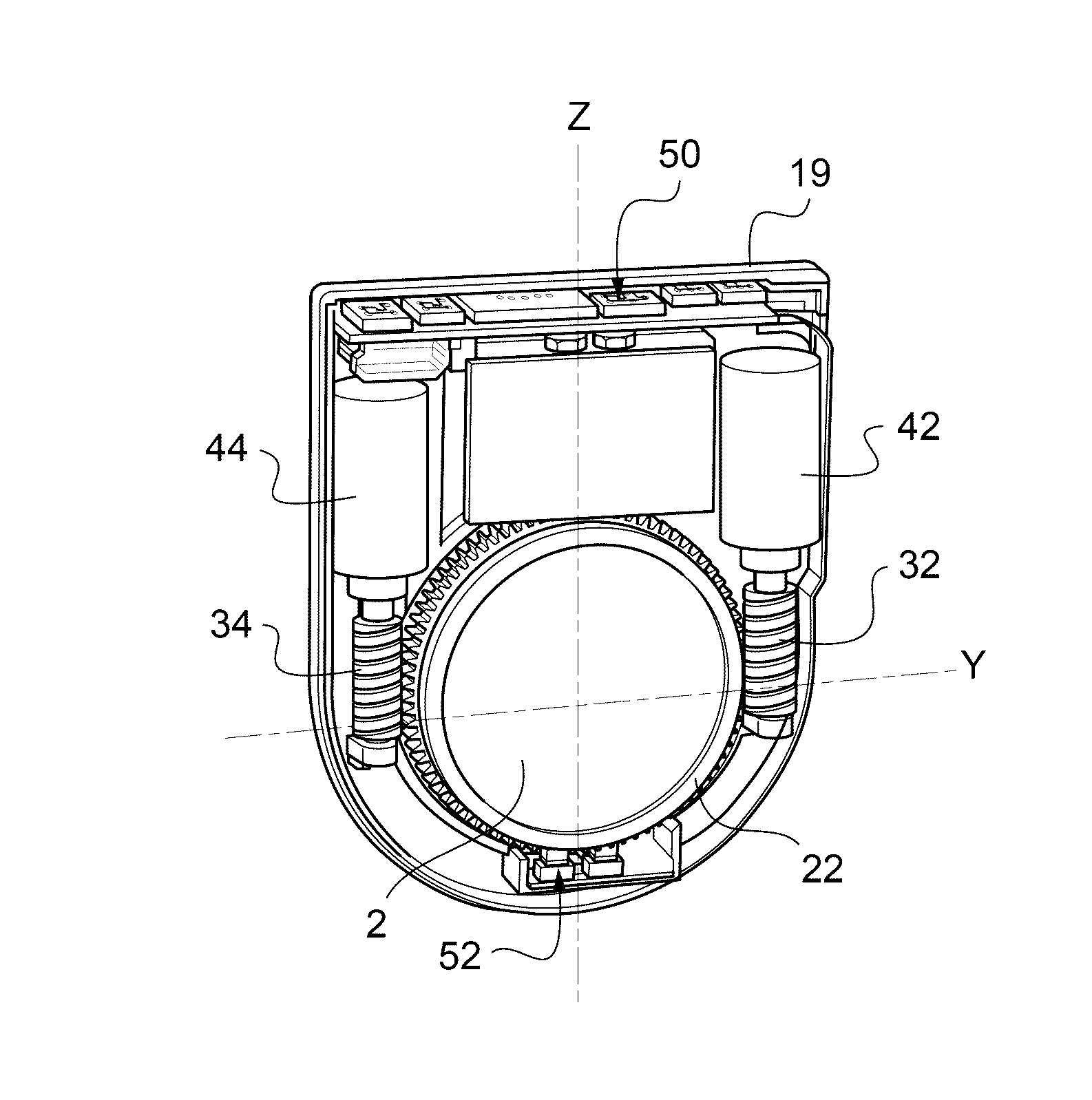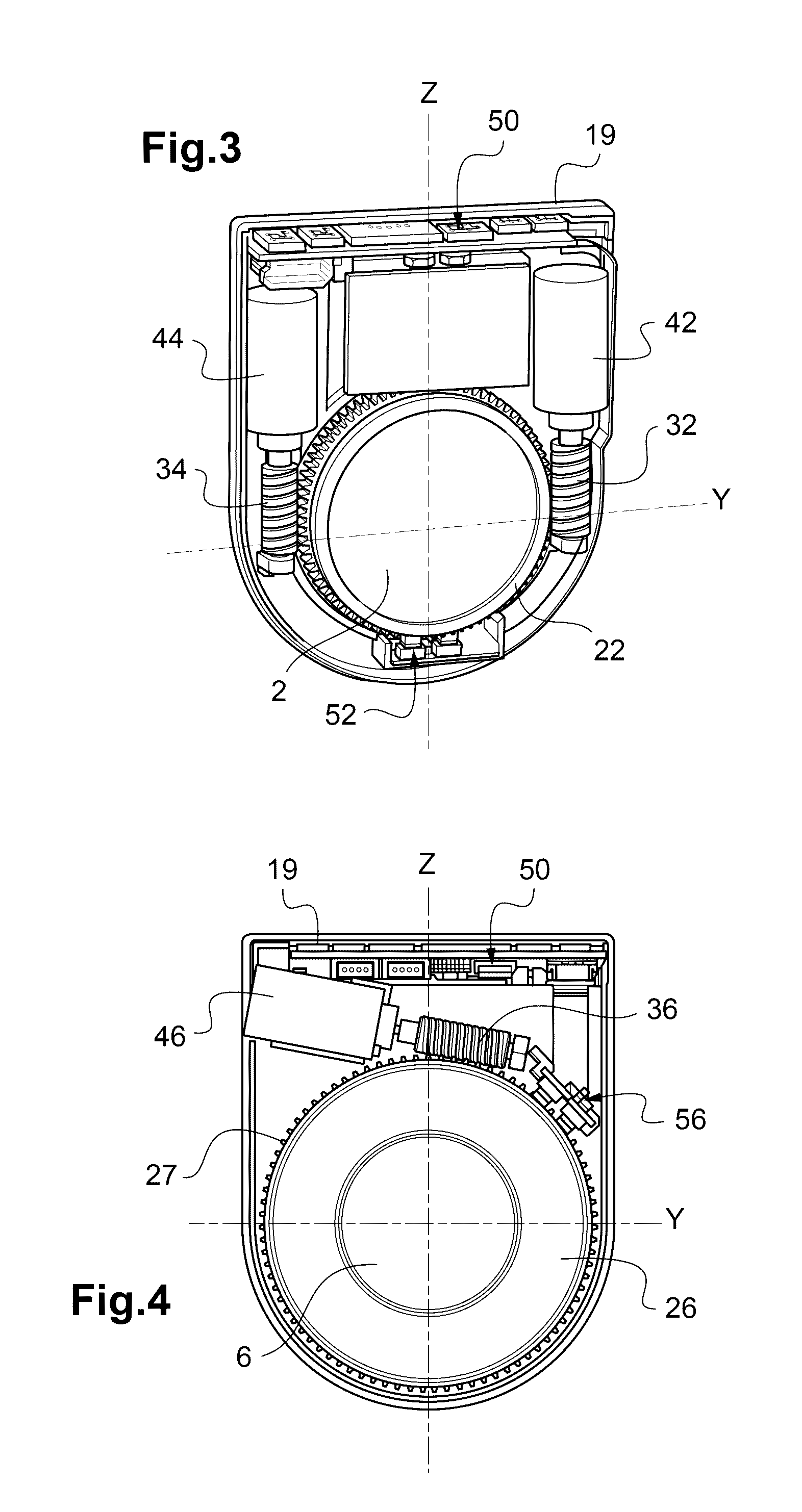Visual compensation system and optometric binocular device
a binocular device and visual compensation technology, applied in the field of optometry, can solve the problems of unfavorable patient care, unfavorable patient care, and substantial bulk and weight of objects
- Summary
- Abstract
- Description
- Claims
- Application Information
AI Technical Summary
Benefits of technology
Problems solved by technology
Method used
Image
Examples
Embodiment Construction
[0049]The description which follows with regard to the appended drawings given by way of nonlimiting examples will clearly elucidate the essence of the invention and the manner in which it may be carried out.
[0050]In the appended drawings:
[0051]FIG. 1 schematically shows the optical elements used in one exemplary implementation of the invention;
[0052]FIG. 2 shows a cross-sectional view of an exemplary visual compensation system according to the teachings of the invention;
[0053]FIG. 3 shows a cutaway view of the visual compensation system in FIG. 2, from the side of the cylindrical lenses;
[0054]FIG. 4 shows a cutaway view of the visual compensation system in FIG. 2, from the side of the variable spherical lens;
[0055]FIG. 5 schematically shows an element for controlling the visual compensation system in FIG. 2.
[0056]FIG. 1 schematically shows the main optical elements of an exemplary visual compensation system according to the teachings of the invention.
[0057]These optical elements co...
PUM
 Login to View More
Login to View More Abstract
Description
Claims
Application Information
 Login to View More
Login to View More - R&D
- Intellectual Property
- Life Sciences
- Materials
- Tech Scout
- Unparalleled Data Quality
- Higher Quality Content
- 60% Fewer Hallucinations
Browse by: Latest US Patents, China's latest patents, Technical Efficacy Thesaurus, Application Domain, Technology Topic, Popular Technical Reports.
© 2025 PatSnap. All rights reserved.Legal|Privacy policy|Modern Slavery Act Transparency Statement|Sitemap|About US| Contact US: help@patsnap.com



